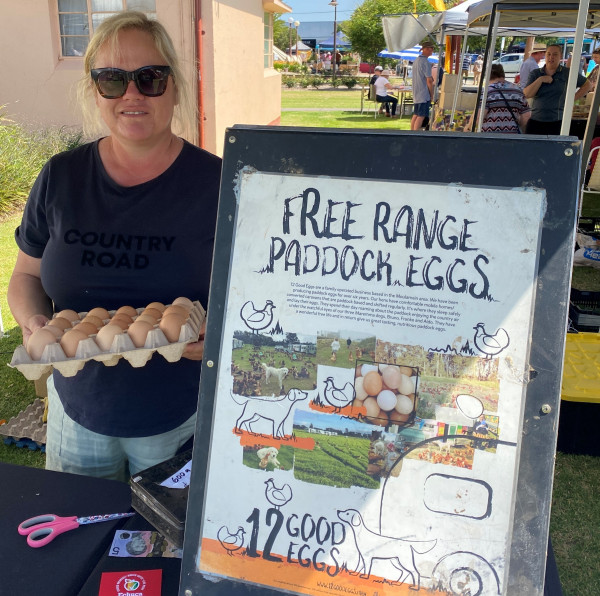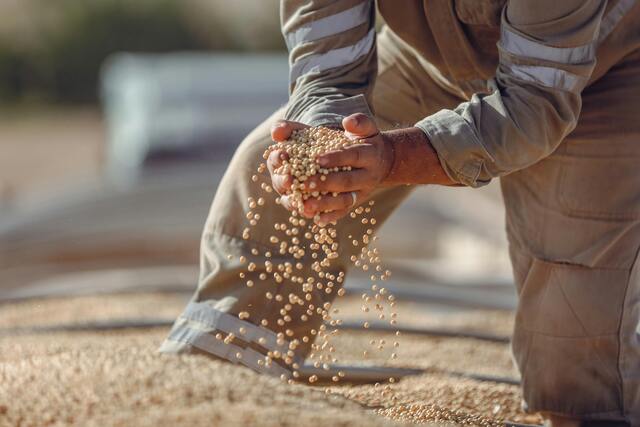A DOUBLE yolker is always an unexpected delight, especially in eggs fried or poached.
It does, however, lose some of its impact when lost in the fevered whipping of an omelette, or the less challenging scrambled eggs – which is where omelettes that didn’t work end up.
Which brings us to 12 Good Eggs, where buyers get (almost) double the value for their money if they don’t mind buying eggs so large they can’t safely fit in the standard egg carton.
Instead, these whoppers come on open trays, secured by plastic wrap. Just the thought of the Good Eggs layers dropping one of these monsters is enough to bring tears to your eyes.
Owner Kate Redfearn says, just like the fruit and vegetable market, the egg industry is a victim of marketing cosmetics – super-large eggs, or those slightly misshapen, are rejected by the mainstream market because they don’t meet strict ideas on size, shape and colour.
In the trade these misfits are known as “ugly”. Contorted carrots and mega-eggs taste like carrots and eggs and their benefits are the same.
Ms Redfearn points out on the inside such eggs are not just perfectly good, you get more bang for your buck.
You could suppose, statistically, when she collects about 2500 eggs a day, she would see plenty of double yolkers, but that would be wrong.
Percentages never lie. Based on a vast amount of data, only one egg in every 1000 is likely to be a double-up.
But Ms Redfearn and her happy cluckers are rewriting those record books. She buys in young hens at the point of laying, and research shows the younger ones are more likely to produce the doubles.
And they must be painfully good at the jumbo goog business because every Echuca Farmers Market (on the first and third Saturday of every month – and the fifth if there is one) she is there with countless trays overflowing with ginormous eggs.
“We run 3500 hens across 150ha – that’s about 60 times more space per bird that is required to be classified free range and our hens have comfortable mobile homes-converted caravans that are paddock based and shifted regularly, where they can sleep safely and lay their eggs,” Ms Redfearn said.
“And they then spend their day roaming about the paddock enjoying the country air. The flexibility to shift hens is part of our holistic approach to land management as the soil is regenerated through rotational grazing, which disperses nutrients across the farm.
“Hen health is optimised and consistent high egg quality can be maintained. Our supplementary feed is formulated by an experienced industry nutritionist and fills the gap in seasonal variations in paddock feed availability and hen health requirements.
“Our hens are moved to fresh ground regularly. This prevents manure and subsequent pathogen build-up and allows for healthy natural fertilisation of our paddocks.
“They have a wonderful free life, and in return give us great tasting, nutritious paddock eggs.”
The eggs are collected daily from the farm near Moulamein, in south-western NSW, and then whipped back up the Murray to Barham, where Ms Redfearn has her factory complex – a hygienic and climate controlled environment where she and her support team clean, sanitise, weigh, grade, stamp and pack the eggs.
Of all the gear, the grader must be just about the No.1 priority as it culls all the double yolkers from the run-of-the-mill single yolkers rolling along the production belt so they can be reassigned to the ugly department and loaded on to open trays to be sold to Ms Redfearn’s growing band of devotees, who hang out to be first in when she sets up her stall on market days.
Read the full story in next week’s North West Farmer.







